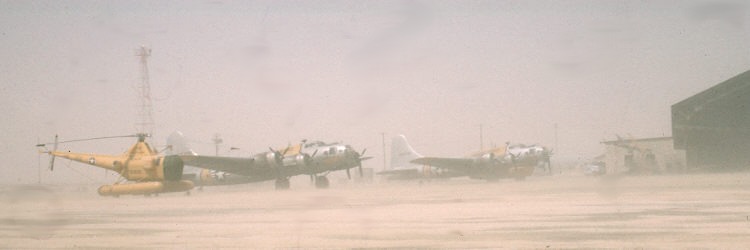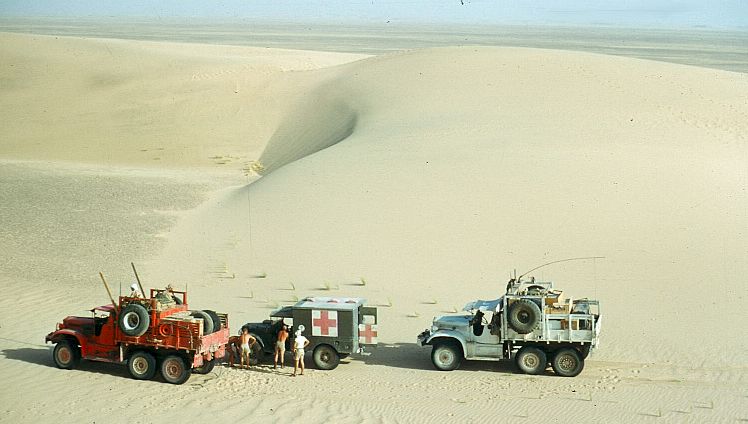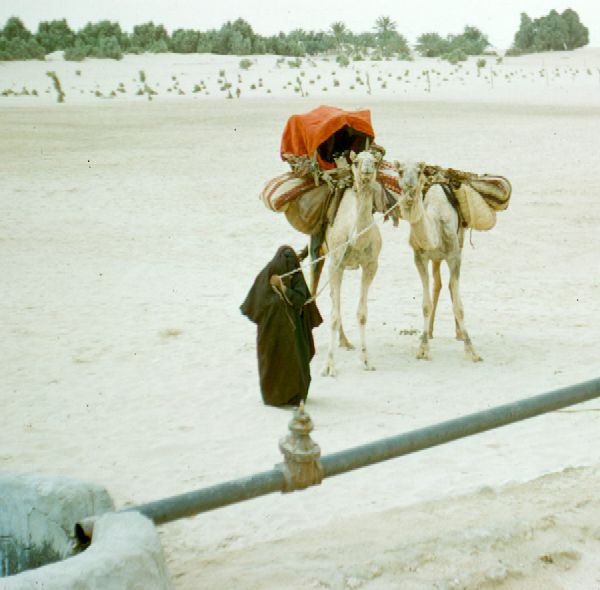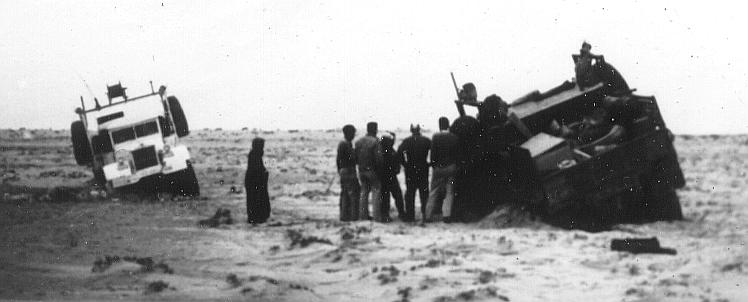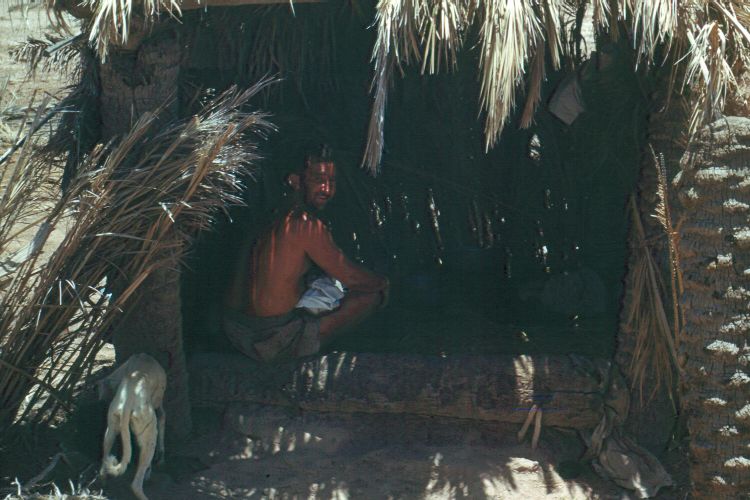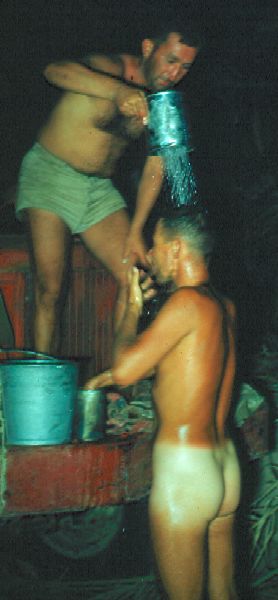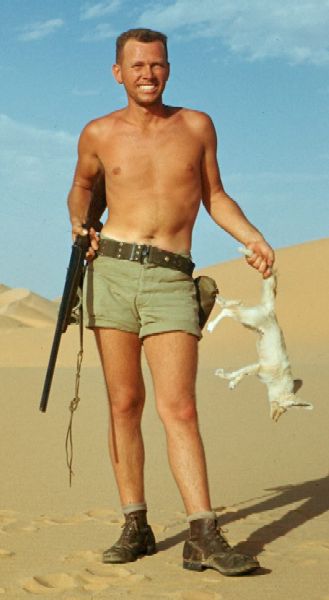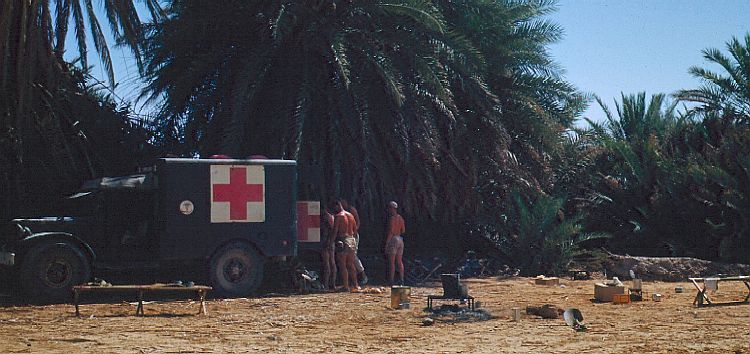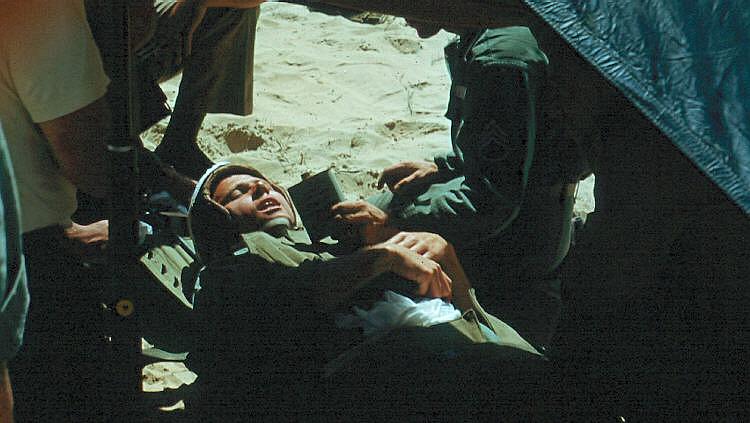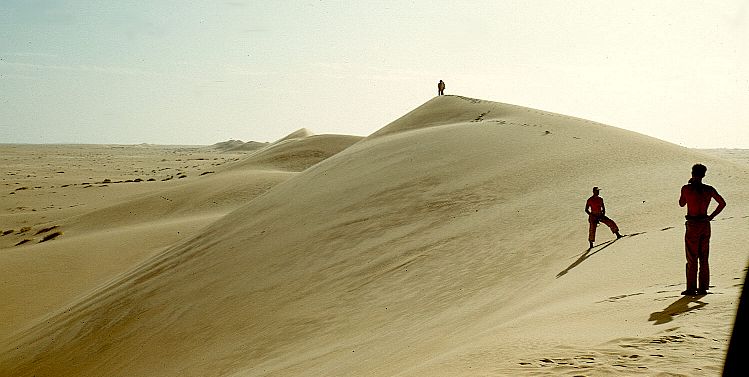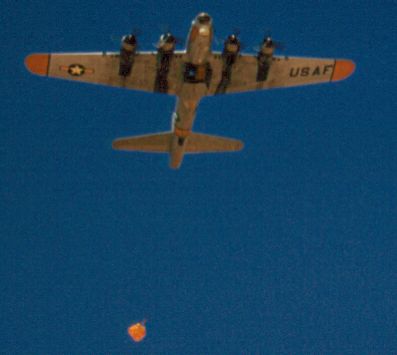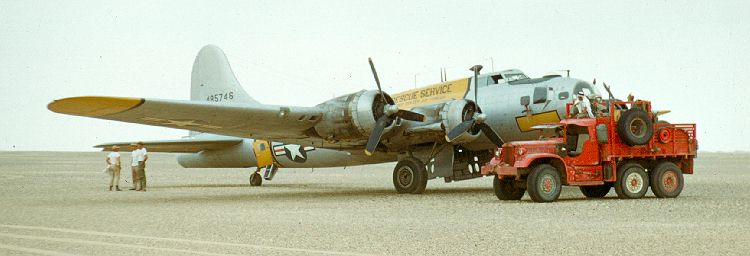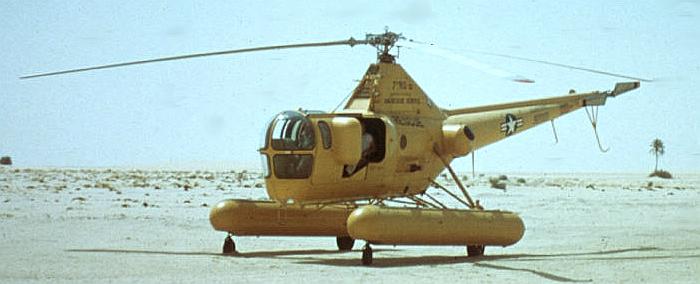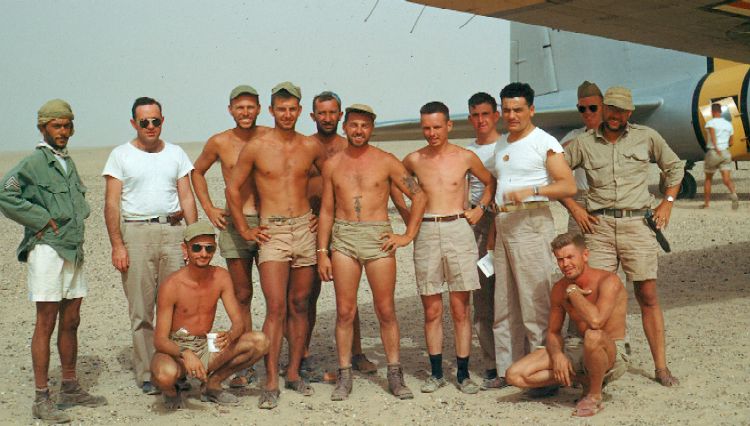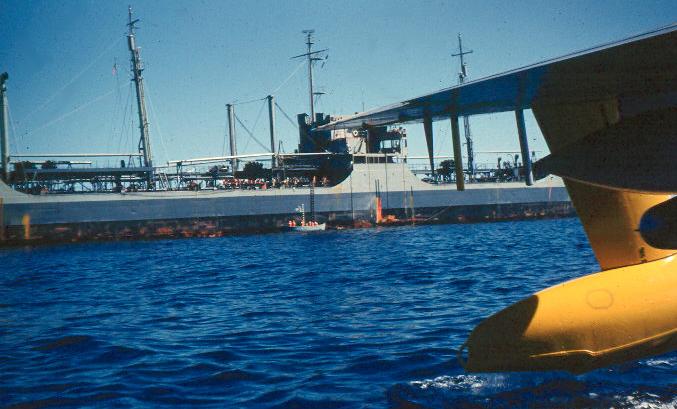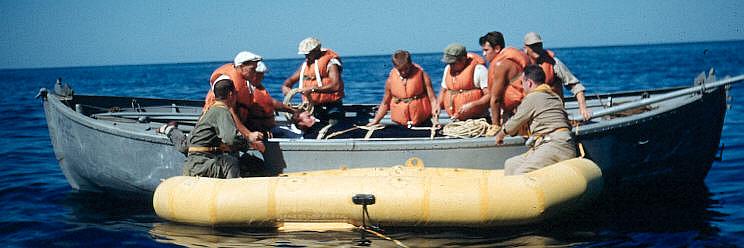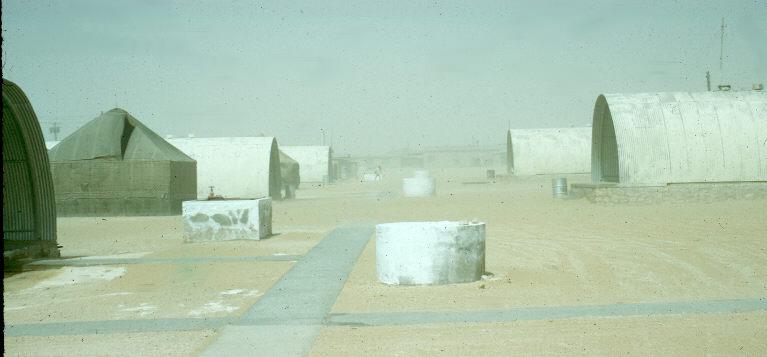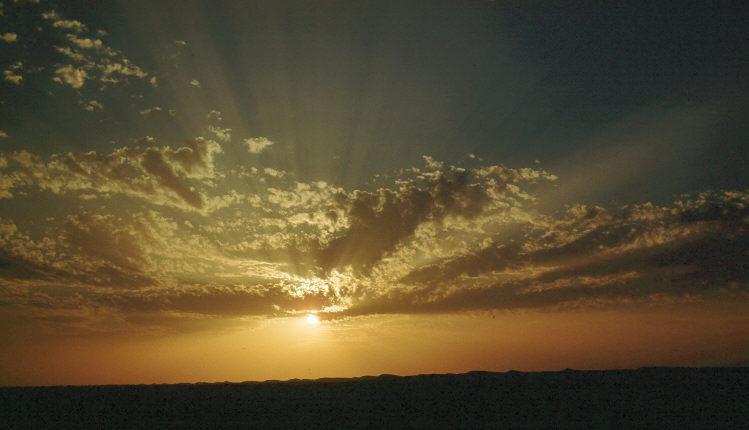| Home
& Index | Email
Me! Photo Album of Operations by Flight D, 7th Air Rescue Squadron DHAHRAN AIR FIELD, SAUDI ARABIA 1950-1951 By Ted A.
Morris, Lt. Col., USAF, Retired
The aircraft of Flight 'D', 7th ARS. Two SB-17Gs, one with an A1 airborne droppable life boat attached, and the float-mounted H-SH helicopter. An almost daily sand storm is just developing. *********************************************
Flight 'D' land rescue vehicles at the northern edge of the Rub Al Khali desert. The 4x4 Dodge ambulance has a flat tire. The 6x6 Diamond T truck on the left carriers 800-gallon of truck gas, spare parts, maintenance tools and equipment. The other 6x6 carries 500-gallons of water, food and communication equipment. *********************************************
An Arab woman and her desert vehicles at an oasis near the Kuwait border. Out of the photo, to the left, her Arab husband was very upset and demanded we not talk to her and take no photos. They believed once their image was trapped in the camera box Allah would no longer protect them. The husband was quickly unwrapping a muzzle loading rifle with a very large bore as we hurriedly drove away. *********************************************
The 6x6 land rescue truck
breaks through a hard sun-baked crust into a
quagmire that starts to harden like concrete when
the air gets to the mud-like mixture. *********************************************
Talk about problems!
*********************************************
The ruins of a village at the oasis of Wahat Jabrin, 200-miles South of Dhahran, decimated by malaria in the mid-18008. The oasis, about 50-acres in size, wad uninhabited except for the King's official caretaker. it contained numerous deep wells, date palms and rotted vegetation many feet deep. *********************************************
The Arab caretaker's but at
Wahat Jabrin. A land rescue team member sits in the
entrance. We were treated to scalding hot tea brewed
in a very ornate cooper and brass teapot.
*********************************************
The author and a desert
fox. The fox was food for about one-third of
the ticks, lice, fleas and other vermin in the
desert. The other two-thirds were on the two
foxes we captured and used in our evaluations on
desert survival, one of the major tasks of Flight
'D.' *********************************************
The cooking fire that nearly caused serious damage to the oasis, igniting the rotted underground vegetation. It required much effort to extinguish the fire. *********************************************
One of our tasks on these
"field trips" was to provide training for
para-rescue teams from Dhahran. Here I am
prentending to be a downed pilot and attended to
by PJs from the squadron who parachuted in from
one of our SB-17Gs.
Parallel rows of sand dunes called ERKS, a major terrain obstacle found in the Rub Al Khali Desert. Many hours were expended getting our land rescue vehicles up and down these sand dunes. *********************************************
A SB-17G resupplies the land
rescue team by parachute. This was the easy
part of the job. *********************************************
On occasion, landings could
be made in the large gravel plain areas to the
north of the Rub Al Khali desert.
*********************************************
Flight 'D' H-5H, 92001. Capt. Mosier and SSgt Davis flying at night, in a severe sand storm and taxiing about in shark infested waters, rescued the pitifully few survivors of two DC-4 aircraft which crashed during the sand storm into the Persian Gulf. *********************************************
Some members of Flight 'D' land rescue team pose with some SB-17G aircrew members (in white t-shirts) during resupply efforts in the Abu-Babr gravel plain of Saudi Arabia. Saudi Army Liaison Officer, Lt. Hakim, wearing a sergeant fatigue jacket, is at the extreme left of the group. The author is standing, 3rd from left. *********************************************
The USNS PECOS in the Arabian Sea. The small life boat is bringing an injured sailor for an evacuation flight on SA16A, 49-075. The sea looks deceivingly calm, but in fact very large swells made landing and take-off very hazardous. *********************************************
Transferring the injured
sailor from the bulky life boat via rubber raft to
the SA-16A for the flight back to Dhahran.
*********************************************
Back at Dhahran, here's a typical day on Main Street in the Enlisted Quarters area! *********************************************
Not everyday was bleak. Here is a sunset over the Rub al Khali. *********************************************
Copyright by Ted A. Morris, 2001 |
